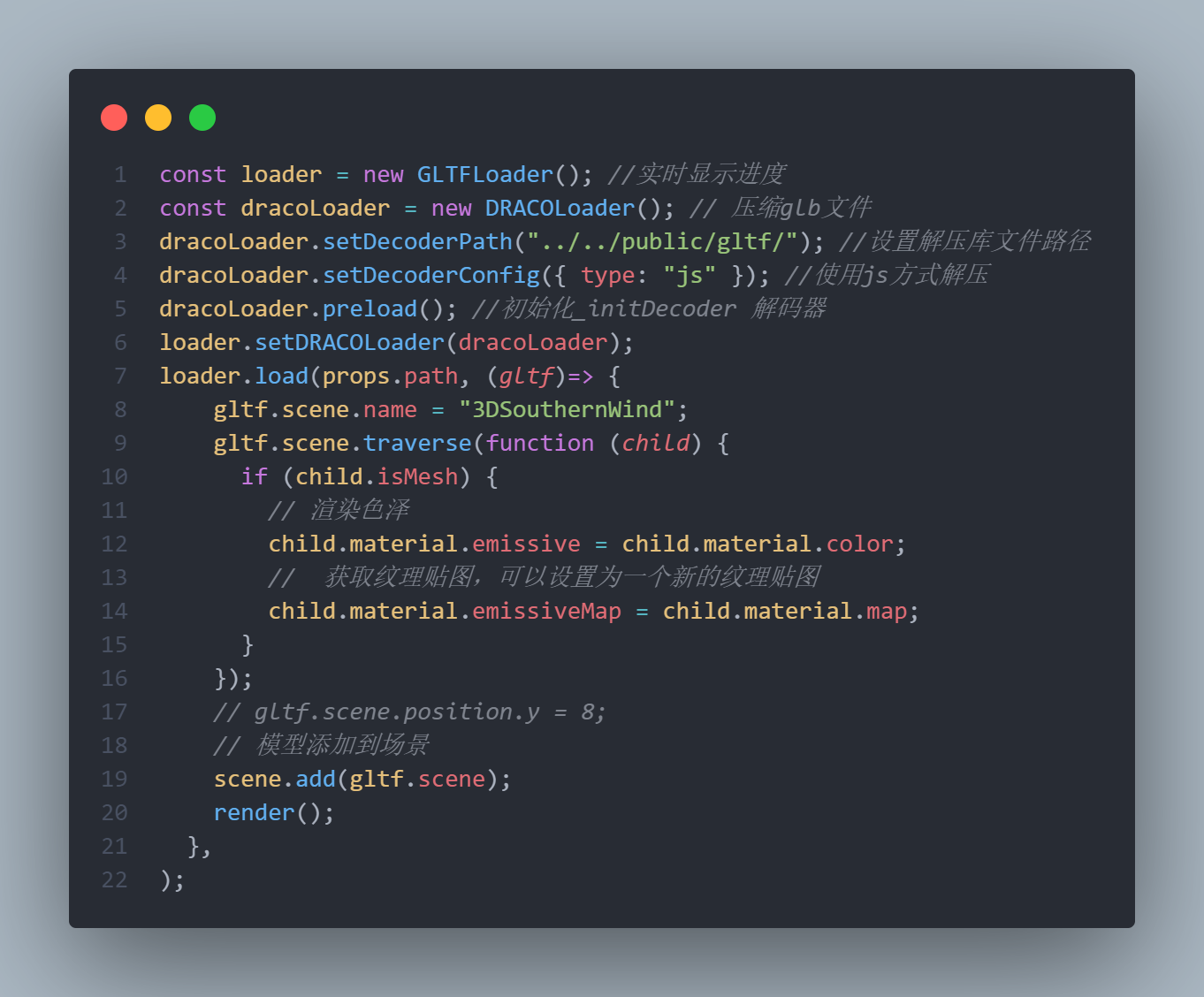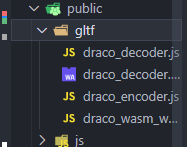Three——glb模型压缩
web开发基于Vue3对three.js加载3d模型过程中,往往会出现模型太大导致前端加载时间过长,降低用户使用的体验,我们这里选取gltf-pipeline的DRACOLoader方式来解压模型。
- 首先需要全局安装
js
// npm安装
npm install -g gltf-pipeline
// yarn安装
yarn global add gltf-pipeline常用的压缩命令
js
gltf-pipeline -i 13131312(4).glb -o 13131312zip.glb -d 我们可以看到,使用Draco压缩网络模型会比之前小了将近一半,这个是会根据纹理,面等一系列材质有关
我们可以看到,使用Draco压缩网络模型会比之前小了将近一半,这个是会根据纹理,面等一系列材质有关
在Vue3中使用
// 导入glb模型
import { GLTFLoader } from "three/addons/loaders/GLTFLoader.js";
// 压缩模型包
import { DRACOLoader } from "three/examples/jsm/loaders/DRACOLoader";js
const loader = new GLTFLoader(); //实时显示进度
const dracoLoader = new DRACOLoader(); // 压缩glb文件
dracoLoader.setDecoderPath("../../public/gltf/"); //设置解压库文件路径
dracoLoader.setDecoderConfig({ type: "js" }); //使用js方式解压
dracoLoader.preload(); //初始化_initDecoder 解码器
loader.setDRACOLoader(dracoLoader);
loader.load(props.path, (gltf)=> {
gltf.scene.name = "3DSouthernWind";
gltf.scene.traverse(function (child) {
if (child.isMesh) {
// 渲染色泽
child.material.emissive = child.material.color;
// 获取纹理贴图,可以设置为一个新的纹理贴图
child.material.emissiveMap = child.material.map;
}
});
// gltf.scene.position.y = 8;
// 模型添加到场景
scene.add(gltf.scene);
render();
},
);
dracoLoader.setDecoderPath是用来设置解压库的文件路径,这个需要根据实际位置去获取路径中的js 
props.path这个位置替换成压缩后的图片路径即可 我这里是放在src的assets文件夹下 Vue3引入本地模型路径
js
const path = new URL(`../assets/SouthernWind.glb`, import.meta.url).href;Vue2引入本地模型路径
js
const path = require(../assets/SouthernWind.glb) Personal blog😶🌫️
Personal blog😶🌫️